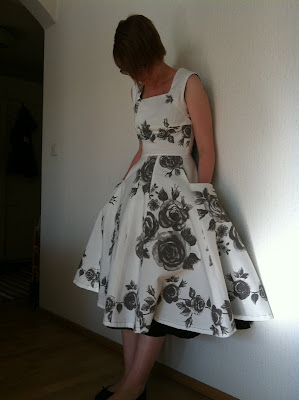Craft Friday: Polymer clay millefiori beads
Craft Friday is a 2012 recurring blog post
where I present either a hobby jewelry technique
or project I'm currently working on.
After I had had the courage last autumn to take an arts and craft course at Turun Työväenopisto, I got emboldened to enroll in a second one this spring. The first course was about "sculpting different types of jewelry from assorted clays and doughs", and I originally enrolled because I wanted to try out working with polymer clay and see if it would have been as awful as I thought it to be. Like I wrote about it back then:
"Because I wrote on my "Non-faves of 2011"-list that cernit-clay sculpting is a non-fave of mine. This way, I get to try out different types of clay/polymer modelling, and get to use more borrowed tools while I do it. Plus, I don't have to grime up my desk. Always a plus.If it's one thing I don't like. It's. Getting. Grime. And. Needles. Under. My. Nails."
I still sooooo concur on that last bit. But it's actually not as bad as I originally thought it would be.
This second course is specifically about using polymer clay with the millefiori-techniques adapted for polymer clay from glass work.
Anyway, after last Craft Friday post (about necklaces), I started thinking about beads in general. And then if I should present any of the work I've done on this second course so far. We have two lessons more to go, and hopefully that will be enough time to finish all the pieces I've been working on.
You only got two packages of Cernit-clay from the teacher on the first lesson (those packages were included in the price for the course) and since then I've nearly used up everything to make the millefiori-canes for coating my wooden beads...
Well, we'll see if I'll manage to come up with a project to use the finished pieces in.
Anyway, here's some photos of the "how to coat wooden beads in millefiori". Inspirational source for this was this page on Instructable, but I found that if your wooden beads just happens to already be varnished, then the pieces cut from the clay cane will stick to it without any help from liquid clay. Made a huge difference for me.
This second course is specifically about using polymer clay with the millefiori-techniques adapted for polymer clay from glass work.
Anyway, after last Craft Friday post (about necklaces), I started thinking about beads in general. And then if I should present any of the work I've done on this second course so far. We have two lessons more to go, and hopefully that will be enough time to finish all the pieces I've been working on.
You only got two packages of Cernit-clay from the teacher on the first lesson (those packages were included in the price for the course) and since then I've nearly used up everything to make the millefiori-canes for coating my wooden beads...
Well, we'll see if I'll manage to come up with a project to use the finished pieces in.
Anyway, here's some photos of the "how to coat wooden beads in millefiori". Inspirational source for this was this page on Instructable, but I found that if your wooden beads just happens to already be varnished, then the pieces cut from the clay cane will stick to it without any help from liquid clay. Made a huge difference for me.
 |
| Starting to make the first millefiori cane... |
 |
| Putting all the parts (or worms, hah!) together. |
 |
| Then it's just rolling, rolling, rolling... |
 |
| ...until it's really thin, and then all it takes is cooling the cane and starting to cut put parts from it. |
 |
| And then you roll it around really gently, so the pattern is preserved as much as possible and the "empty" areas between the cut pieces are filled up nicely. |
The work itself wasn't that hard to do, but the funny thing here is mentioning that my hands actually started aching after doing all the heavy duty rolling (rolling rolling...). Imagine that: muscle soreness from conditioning polymer clay!


Comments
Post a Comment